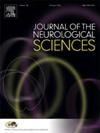Post TIA care in Ontario: A population-based cohort study on secondary prevention
IF 3.2
3区 医学
Q1 CLINICAL NEUROLOGY
引用次数: 0
Abstract
Background
Transient ischemic attacks (TIAs) often precede ischemic strokes. Little is known about adherence to secondary prevention guidelines among individuals post TIA.
Methods
We conducted a population-level, retrospective cohort study of individuals in Ontario, Canada, with a TIA between April 2010 to March 2019, that survived at least one year. We assessed low density lipoprotein (LDL) and glycated hemoglobin (HbA1C) testing, receipt of important secondary prevention medications for individuals aged 65 years and older, and receipt of influenza vaccines. Health care utilization was described in the 90 days following the TIA. We compared these rates to a cohort of individuals after first ischemic stroke.
Results
After exclusions, 36,487 individuals were included (mean age 68.6 years; 50.0 % female). LDL testing was performed in 66.3 % of individuals, and 58.4 % had an HbA1C test in the year following their TIA. Lipid lowering medications were prescribed to 75.2 %, while 82.7 % received an antihypertensive. Among individuals with diabetes, 68.6 % were prescribed an anti-hyperglycemic, and among those with atrial fibrillation, 81.1 % were prescribed an anticoagulant. Influenza vaccines were administered to 43.6 % of individuals. Within 90 days, 30.2 % visited an emergency department, and 94.2 % saw a primary care provider. Results were similar when individuals were followed for three years post TIA. Compared to ischemic stroke survivors, individuals post-TIA were less likely to have an HbA1C test (p-value <0.001) or receive important secondary prevention medications, but were more likely to receive an influenza vaccine (p-value <0.001).
Conclusions
Observance of secondary prevention guidelines following a TIA could be improved for several clinical recommendations, especially when compared to ischemic stroke survivors.
安大略省TIA后护理:一项基于人群的二级预防队列研究
背景:短暂性脑缺血发作(tia)常发生在缺血性中风之前。对于TIA后个体对二级预防指南的依从性知之甚少。方法我们对2010年4月至2019年3月期间加拿大安大略省TIA患者进行了一项人群水平的回顾性队列研究,这些患者存活至少一年。我们评估了低密度脂蛋白(LDL)和糖化血红蛋白(HbA1C)检测、65岁及以上人群重要二级预防药物的接受情况以及流感疫苗的接受情况。在TIA后的90天内描述了医疗保健利用情况。我们将这些比率与首次缺血性中风后的个体队列进行了比较。结果排除后,共纳入36487例患者(平均年龄68.6岁;50.0%女性)。66.3%的患者进行了LDL检测,58.4%的患者在TIA后的一年内进行了HbA1C检测。服用降脂药物的占75.2%,服用降压药的占82.7%。在糖尿病患者中,68.6%的人开了抗高血糖药,在房颤患者中,81.1%的人开了抗凝血药。43.6%的人接种了流感疫苗。在90天内,30.2%的人去了急诊科,94.2%的人去看了初级保健提供者。TIA后随访三年的结果与此相似。与缺血性卒中幸存者相比,tia后患者接受HbA1C检测(p值<;0.001)或接受重要二级预防药物治疗的可能性较小,但接受流感疫苗接种的可能性较大(p值<;0.001)。结论:TIA后二级预防指南的遵守可以提高一些临床建议,特别是与缺血性卒中幸存者相比。
本文章由计算机程序翻译,如有差异,请以英文原文为准。
求助全文
约1分钟内获得全文
求助全文
来源期刊

Journal of the Neurological Sciences
医学-临床神经学
CiteScore
7.60
自引率
2.30%
发文量
313
审稿时长
22 days
期刊介绍:
The Journal of the Neurological Sciences provides a medium for the prompt publication of original articles in neurology and neuroscience from around the world. JNS places special emphasis on articles that: 1) provide guidance to clinicians around the world (Best Practices, Global Neurology); 2) report cutting-edge science related to neurology (Basic and Translational Sciences); 3) educate readers about relevant and practical clinical outcomes in neurology (Outcomes Research); and 4) summarize or editorialize the current state of the literature (Reviews, Commentaries, and Editorials).
JNS accepts most types of manuscripts for consideration including original research papers, short communications, reviews, book reviews, letters to the Editor, opinions and editorials. Topics considered will be from neurology-related fields that are of interest to practicing physicians around the world. Examples include neuromuscular diseases, demyelination, atrophies, dementia, neoplasms, infections, epilepsies, disturbances of consciousness, stroke and cerebral circulation, growth and development, plasticity and intermediary metabolism.
 求助内容:
求助内容: 应助结果提醒方式:
应助结果提醒方式:


